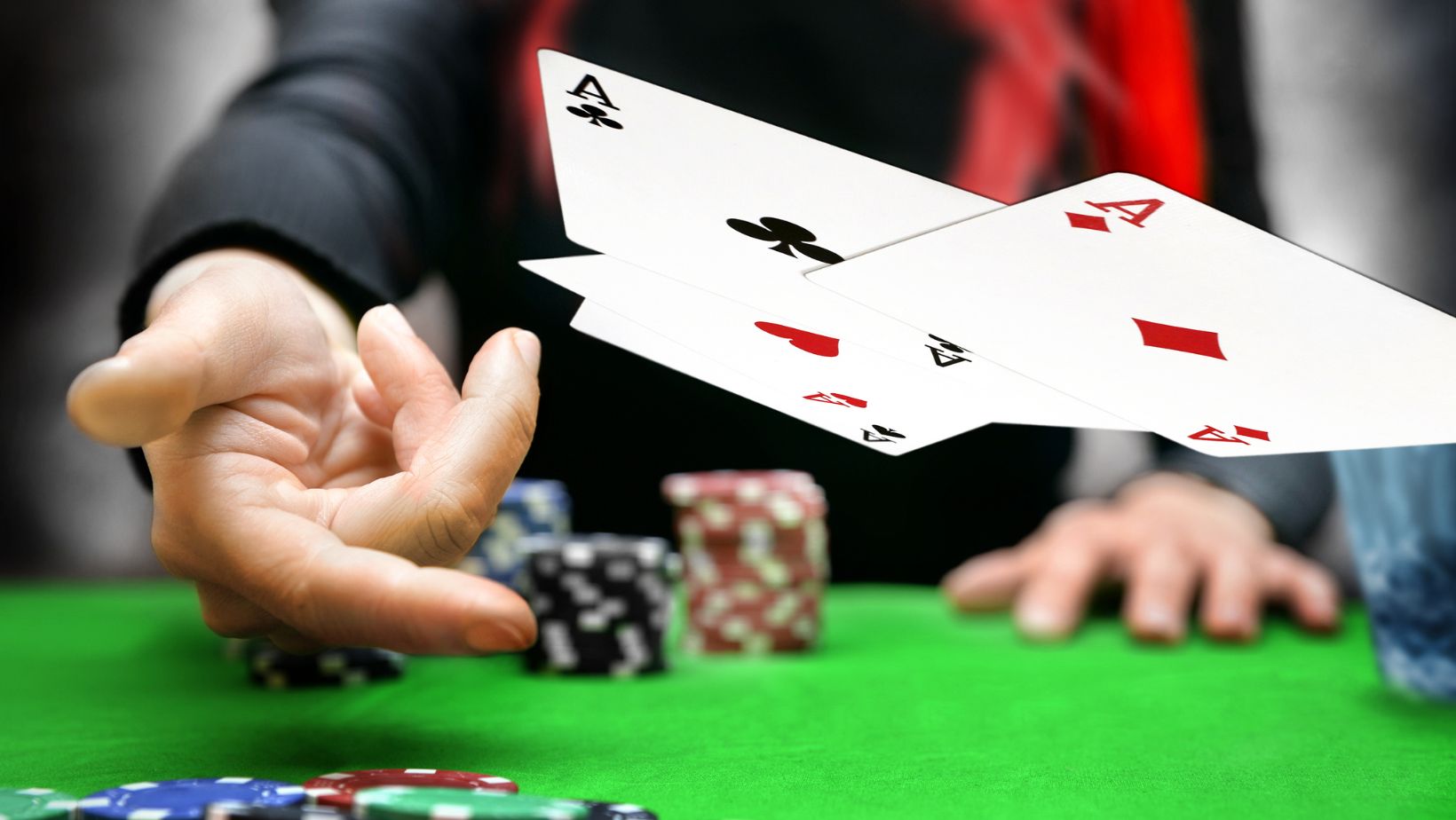We’re going to break down the art of poker for you in this article. By the end, you’ll have a deeper understanding of poker strategies and be equipped with practical tips to improve your game. Whether you’re a casual player looking to up your game night performance or an aspiring professional seeking to refine your skills, this comprehensive guide will serve as your roadmap to poker success.
Getting Started with Poker Strategies
Beyond the luck of the draw, there’s a complex web of strategies and skills that separate the amateurs from the pros. The popularity of poker continues to grow, as per a recent report on online gaming revenue surges by CardPlayer, making the ability to conceal your emotions more important than ever. In the digital age, where players can’t see each other’s faces, the concept of a poker face has evolved to include controlling your betting patterns and reaction times.
Perfecting Your Poker Face
What is a Poker Face?
A poker face is the ability to maintain a neutral expression, regardless of the strength or weakness of your hand. It’s a skill that prevents opponents from reading your emotions and gaining an advantage. Getting this skill down pat could mean the difference between a big win and a tough loss.
How to Master Your Poker Face
- Practice mindfulness: Be aware of your facial expressions and body language at all times.
- Control your breathing: Deep, steady breaths can help maintain composure.
- Focus on a neutral point: Pick a spot on the table to focus on, helping you avoid eye contact that might give away information.
- Use sunglasses or a hat: These accessories can help conceal subtle eye movements or facial twitches.
- Stay consistent: Maintain the same demeanor whether you have a strong or weak hand.

Remember, a good poker face isn’t just about looking emotionless. It’s about presenting a consistent image that doesn’t give your opponents any useful information. Some players even adopt a “reverse tell,” deliberately acting strong when weak or vice versa, to throw off observant opponents.
Decoding Poker Tells
Even though keeping your poker face is important, being able to read your opponents’ tells can give you a significant edge. Poker tells are unconscious behaviors or patterns that can reveal information about a player’s hand or intentions.
A recent incident at a WSOP Circuit event where a player lost control and overturned tables highlights the importance of emotional control in poker. According to Casino Jesus, a respected authority in poker strategy, some common tells to watch for include:
Common Poker Tells
- Shaking hands: Often a sign of excitement, potentially indicating a strong hand.
- Staring at chips: Players might glance at their chips when they have a strong hand, mentally calculating their potential winnings.
- Sudden stillness: A player who becomes unusually still might be trying to appear calm while holding a strong hand.
- Chip handling: The way a player handles their chips can indicate confidence or nervousness.
- Timing tells: Unusual delays or quick actions can suggest the strength or weakness of a hand.
Misleading Tells
It’s important to note that tells can be highly individual. What serves as a tell for one player might be meaningless for another. The key is to observe your opponents carefully over time and look for patterns in their behavior. Be aware that skilled players may use fake tells to mislead you.
Strategic Betting in Poker
Understanding Pot Odds
Betting is the heart of poker, and mastering various betting strategies is crucial for long-term success. As per the same report on online gaming revenue, the surge in World Series of Poker participation indicates a growing interest in advanced poker strategies. Understanding pot odds (the ratio of the current pot size to the cost of a contemplated call) and implied odds (potential future bets you may win if you hit your hand) is crucial for making mathematically sound decisions.
Bluffing Strategies
Let’s take a look at some important betting strategies you should think about: Bluffing involves betting or raising with a weak hand to make opponents fold better hands. Semi-bluffing is similar but done with a hand that has the potential to improve (like a flush draw).
Here’s a step-by-step example of a strategic betting scenario:

- You’re in late position with A♠K♠ (a strong starting hand).
- There’s one raise before you. You re-raise (3-bet) to build the pot and potentially win pre-flop.
- The original raiser calls, and the flop comes 7♠9♣Q♠.
- Your opponent checks. You make a continuation bet of about 2/3 of the pot, leveraging your pre-flop aggression.
- If called, you have multiple outs (any Ace, King, or spade) to improve your hand on the turn or river.
This sequence demonstrates position betting, continuation betting, and semi-bluffing all in one hand. Your betting patterns should be consistent with the hand you’re representing, whether it’s the hand you actually hold or a bluff.
Wrapping Up Your Poker Strategy Journey
Mastering the art of poker requires a good mix of understanding people, thinking strategically, and knowing your numbers. You’ve got to practice, be patient, and be open to learning from both wins and losses.
As you apply these strategies in your next game, pay attention to how they influence the dynamics at the table and your overall results. Poker is a journey of continuous learning and improvement. Whether you’re playing in a friendly home game or aspiring to compete in the World Series of Poker, the strategies outlined in this article will serve as valuable tools in your poker arsenal. So shuffle up, deal, and may the best strategy win!
